#Web editor software free
Explore tagged Tumblr posts
Text
on the topic of writing software
I want to ramble at you about some writing software options. 98% of the time I'm perfectly content with LibreOffice Writer (and previously I used Word, back when Microsoft products were less shitty). But every now and then when I have a new project (like now - more on that later) I start looking for something shiny and new to try. And I fell down into another research rabbit hole lol
I usually don't talk a lot about this bc my needs are very simple, and not sure how useful my opinion is to others, but I enjoy the topic. It's an intersection of creative writing and tech nerdiness and I like both of those things. Also what writing software you prefer really depends on the type of writer that you are, and everyone has a slightly different writing process and I find that fascinating.
Now, as I said, I'm coming at it from a slightly tech-nerd angle. I don't care if the installation is clunky, I'm happy to see the words open-source, and the need to create an account will already mildly piss me off (:
Don't worry, I'm not as intense as the guy writing his novel in Vim. Though fucking respect. And I can't say I'm not tempted to try it even with the steep learning curve lmao (Seriously, if you don't know Vim is notorious among software developers.)
Anyway, things I've tried so far:
Manuskript: this was listed as an open-source Scrivener alternative (though I haven't tried Scrivener. so.). I gave it a go when I was writing heart worth the trouble and it was pretty nice. It helped me when I had to move scenes and chapters around. But overall I think it was made with plotters in mind bc it wants you to enter a lot of information upfront. I'm not a planner/architect type of writer so this type of software is a bit overwhelming for me. Still, the fact that it's open source and works on Linux gets kudos from me.
Wavemaker: I recently played around with this, and I actually surprisingly like the features it has. You can put multiple books in a project, which is very nice if you like to work on different things, like fanfic, novels, etc. The mindmap is a feature I liked, though it's a bit clunky bc it collapses the text fields when you exit, and once I added an image field by accident that I could never remove lol I do like a bit of a snowflake method, so that feature is cool, and the cards are pretty straightforward too. Usually, my problem with these apps is that I don't even want to touch half of the features so they are pointless to me, but the features of Wavemaker were kind of nice. It's a web app that you can download and use offline but it's still working from your browser if that makes sense. That was what I didn't really appreciate. Also, it doesn't give you a lot of options to back it up. You either save the wavemaker file, export it into a document (which is fine, but it adds an extra step to the backup process) or you sync with Google Drive *shudders*
Things I want to try out:
Calmly Writer: now this is just purely a text editor that focuses on being very zen, streamlined, distraction-free, etc. It's pretty and it has typewriter sounds. (Yeah, I'm not immune to a pretty UI and harmless fun features alright? I can contain multitudes :P) It has an online version, but you can also download it, and works on Windows, Mac, and Linux. On paper, the desktop app requires a license, but the way they put it is that you can evaluate it for free and the evaluation doesn't have an enforced time limit... So. As good as free. (Though if I really like it, I would totally consider buying a license for 20usd that I can use on 3 computers, that seems fair. I appreciate a license over a subscription model for sure.) Honestly, I think this is the one I'm going to try next bc it just integrates perfectly into my writing process. That being: a multitude of messy, hand-written notes and notebooks + a document editor + backups on hard drive and GitHub (yes, really) ^^"
Shaxpir: This is on the opposite end of the spectrum basically, but out of the "fancy" ones, I kind of like the look of this the most. I like the statistics part in particular. But honestly, I probably won't try it bc it doesn't have a Linux version which would be a pain in the ass for me, and is cloud-based. I kind of don't really trust them, which is my biggest issue with these companies. (Although the creator's heart seems to be in the right place when it comes to AI. Basically, some of their features are based on machine learning and language models. For example, it will recognize passive voice, if it's an adverb with "-ly" or the emotion of a word. Which I think is all cool and fine and shouldn't be lumped in with generative AI. But he also had a website that did this analysis for already published works, and when people pointed out that it was sketchy, he took that down and I can respect that. I'm not sure how much it influenced the actual features of the app, maybe I'll just take a peek out of curiosity. The whole thing does make me have trust issues though lmao) If anyone has experience with it though, I'm interested to hear about it.
Obsidian: not a dedicated writing software, but rather an elaborate note-taking app. I heard good things about it from smart people lol If I really wanted to access my writing on my phone, I would probably use this bc it works on every platform and has end-to-end encrypted sync with version control. I heard you can also integrate it with GitHub which is always music to my ears lol But the setup probably takes a bit of time and I'm not particularly motivated to do that right now.
So yeah, those are the options that appeal to me right now. If anyone used these and has opinions, I'm all ears :D
137 notes
·
View notes
Text
ever wonder why spotify/discord/teams desktop apps kind of suck?
i don't do a lot of long form posts but. I realized that so many people aren't aware that a lot of the enshittification of using computers in the past decade or so has a lot to do with embedded webapps becoming so frequently used instead of creating native programs. and boy do i have some thoughts about this.
for those who are not blessed/cursed with computers knowledge Basically most (graphical) programs used to be native programs (ever since we started widely using a graphical interface instead of just a text-based terminal). these are apps that feel like when you open up the settings on your computer, and one of the factors that make windows and mac programs look different (bc they use a different design language!) this was the standard for a long long time - your emails were served to you in a special email application like thunderbird or outlook, your documents were processed in something like microsoft word (again. On your own computer!). same goes for calendars, calculators, spreadsheets, and a whole bunch more - crucially, your computer didn't depend on the internet to do basic things, but being connected to the web was very much an appreciated luxury!
that leads us to the eventual rise of webapps that we are all so painfully familiar with today - gmail dot com/outlook, google docs, google/microsoft calendar, and so on. as html/css/js technology grew beyond just displaying text images and such, it became clear that it could be a lot more convenient to just run programs on some server somewhere, and serve the front end on a web interface for anyone to use. this is really very convenient!!!! it Also means a huge concentration of power (notice how suddenly google is one company providing you the SERVICE) - you're renting instead of owning. which means google is your landlord - the services you use every day are first and foremost means of hitting the year over year profit quota. its a pretty sweet deal to have a free email account in exchange for ads! email accounts used to be paid (simply because the provider had to store your emails somewhere. which takes up storage space which is physical hard drives), but now the standard as of hotmail/yahoo/gmail is to just provide a free service and shove ads in as much as you need to.
webapps can do a lot of things, but they didn't immediately replace software like skype or code editors or music players - software that requires more heavy system interaction or snappy audio/visual responses. in 2013, the electron framework came out - a way of packaging up a bundle of html/css/js into a neat little crossplatform application that could be downloaded and run like any other native application. there were significant upsides to this - web developers could suddenly use their webapp skills to build desktop applications that ran on any computer as long as it could support chrome*! the first applications to be built on electron were the late code editor atom (rest in peace), but soon a whole lot of companies took note! some notable contemporary applications that use electron, or a similar webapp-embedded-in-a-little-chrome as a base are:
microsoft teams
notion
vscode
discord
spotify
anyone! who has paid even a little bit of attention to their computer - especially when using older/budget computers - know just how much having chrome open can slow down your computer (firefox as well to a lesser extent. because its just built better <3)
whenever you have one of these programs open on your computer, it's running in a one-tab chrome browser. there is a whole extra chrome open just to run your discord. if you have discord, spotify, and notion open all at once, along with chrome itself, that's four chromes. needless to say, this uses a LOT of resources to deliver applications that are often much less polished and less integrated with the rest of the operating system. it also means that if you have no internet connection, sometimes the apps straight up do not work, since much of them rely heavily on being connected to their servers, where the heavy lifting is done.
taking this idea to the very furthest is the concept of chromebooks - dinky little laptops that were created to only run a web browser and webapps - simply a vessel to access the google dot com mothership. they have gotten better at running offline android/linux applications, but often the $200 chromebooks that are bought in bulk have almost no processing power of their own - why would you even need it? you have everything you could possibly need in the warm embrace of google!
all in all the average person in the modern age, using computers in the mainstream way, owns very little of their means of computing.
i started this post as a rant about the electron/webapp framework because i think that it sucks and it displaces proper programs. and now ive swiveled into getting pissed off at software services which is in honestly the core issue. and i think things can be better!!!!!!!!!!! but to think about better computing culture one has to imagine living outside of capitalism.
i'm not the one to try to explain permacomputing specifically because there's already wonderful literature ^ but if anything here interested you, read this!!!!!!!!!! there is a beautiful world where computers live for decades and do less but do it well. and you just own it. come frolic with me Okay ? :]
*when i say chrome i technically mean chromium. but functionally it's same thing
461 notes
·
View notes
Note
Do you think it's a good idea to try and get away from Google Docs when it comes to writing? I really can't afford any other fancy program to write my drafts in, and it honestly seems like the easiest - not to mention, most convenient - program to use to share my manuscript with beta readers. I could use advice on this matter because I keep seeing things across the net about it being a bad place to work on writing, but I have no idea what to turn to to make things easy for me and my future beta readers.
This is such a good question. Thank you.
So, a little backstory. Ever since Google removed their motto "do no evil" they have gone down the rather predictable path of all big players of the rot economy: putting profits over user experience.
A little while back, there was rumor that Google trains AI with the content of google docs, then they said they don't really, they only scan the content and do nothing with it, and then they started blocking access to documents with sexy images. Do we believe that Google has our own best interest at heart? That's something everyone has to decide for themselves.
Back then, I made a post with alternatives for Google Docs, you can find it here, also check the reblogs for more options:
Now, is it a good idea to switch from google docs? I think it is, but I'm also not consistent with it. As you mentioned, it seems to be the easiest to share writing with beta readers, and I also still often use it for fanfiction.
But there are alternatives, and they require very little adjustment in the process. Let me give you two free options.
Ellipsus is webbased, meaning you can write in it in the browser on any device. They have sharing, specifically for beta reading, and an export function for AO3.
Reedsy (marketplace around everything self-publishing) has an editor. It is webbased, and they also have an option for sharing with beta readers. This software is aimed at book type-setting and exporting but it works just fine for copying to web.
Personally, I'm currently switching everything to LibreOffice (also free!) files in some cloud connected folder. I used to do a lot of mobile writing on my phone with a bluetooth keyboard but currently, I'm taking my laptop everywhere so LibreOffice works great for me. If I have to use my phone or tablet for some lightweight mobile writing, on vacation for instance, I can still use something webbased.
So, I hope I gave you some interesting options. Do I think it's a good idea to make us less dependent on Google? Yes, I do. I don't trust them.
We have alternatives, and they cost us nothing more than a little adjustment.
~ barbex
#writing software#writing tools#alternatives to google docs#barbex gives advice#ellipsus#reedsy#google docs#libre office
53 notes
·
View notes
Text
worldbuilding websites list
guides/prompts
Fantasy Worldbuilding Questions - SFWA
Dr. Zahir's Ethnographical Questionnaire - FrathWiki
University of Auntimoany Ethnographical Questionnaire
Creature-Race creation sheet by Sethian-Motzart on DeviantArt
Worldbuilding Bible Template – Ellen Brock
Guide to World Building - Pantheons — Dump Stat Adventures
Building a Pantheon: How to Choose Your Gods - Tribality
Making Gods & Pantheons: Worldbuilding Abstract | Red Ragged Fiend
I invented this world building system for myself, and it's helped me a lot. Posting it here in case it helps somebody else too! (and because mnemonics are rad) : r/worldbuilding
Simple Ideas for Your Solarpunk Worlds : r/worldbuilding
50 Worldbuilding Prompts : r/worldbuilding
A few months ago I posted a not-so-elegant expansion of the 4-elements system, and got tons of truly excellent feedback. Inspired by the exciting discussions from back then, here is version 2.0! CC appreciated :) : r/worldbuilding
TheCosmicForces-WoWChronicleSample.png (PNG Image, 1350 × 1800 pixels) — Scaled (37%)
GitHub - honno/classical-elements-expansion: Because the alchemical elements are so last millennia.
brownlisthumanuniversals.pdf - Google Drive
Worldbuilding: Fantasy Religion Design Guide – Inkwell Ideas
Worldbuilding: Clothing and Fashion | HumanVariant
A Guide to Conworld Architecture : r/worldbuilding
Medieval Bestiary : Contents/SiteMap
kosemen-2017-updated-edition-of-book-all-your-yesterdays.pdf
Political Simulator
A World Building Checklist | Articles | cru’s D&D Reading Room
Split City
Fantasy name generators. Names for all your fantasy characters.
word processors/graph makers/visualizers
TiddlyWiki — a non-linear personal web notebook
bibisco: Best Novel Writing Software for Writers
Preceden Timeline Maker: Create a Timeline in Minutes
Timetoast timeline maker | Timetoast timelines
Free online timeline maker
draw.io
Parliament Diagrams
TreeGraph 2 - A phylogenetic tree editor
Fantasy Calendar - Level up your narrative
Family Echo - Free Online Family Tree Maker
Hero Forge Custom Miniatures
Tennessine
Courtney’s Picrew Zone
Ellipsus | Collaborative writing software
real world inspiration
The Meaning and History of First Names - Behind the Name
Geologic Time Scale - Major Divisions of Geologic Time Chart
Geologic Time Scale v. 6.0 - The Geological Society of America - timescl.pdf
Travel Through Deep Time With This Interactive Earth | Smithsonian
ChronostratChart2023-09 - ChronostratChart2023-09.pdf
ics-chart
International Commission on Stratigraphy
Home - Nationalclothing.org
Folk Fashion Tumblr - Traditional Clothing from the world
Glossary for Medieval Art and Architecture
Heraldry Links-A Free Learning Resource
Flags of the World
Food Timeline: food history research service
History of invention: A science and technology timeline
Medieval Bestiary : Animals in the Middle Ages
Medieval Life
Medievalists.net - Where the Middle Ages Begin
Historical World Maps - World History Atlas
57 notes
·
View notes
Note
Hey DeathEye do you have any specific apps or websites to create your gifs? Especially anyway to make quality ones on mobile. Thanks.
Hi 👋 Sure 😄 You see, at the beginning i used to create my gifs on a web page named "giphy.com". It allows you to upload a video clip (15 seconds max) to be turned into a gif (480x360p) 🌐
But if you want to create High Quality gifs, you need programs like Gimp (highly recommended) or Photoshop. It takes more time but it worth to try 🖱️👁️
Also you may try with a video editor named "Openshot". Since 3.0 version is able to create gifs from video clips. This one is opensource software, so you don't need to worry about buying a license, and you may use it even on Linux 🐧
If anyone want to recommend another program or app, feel free to leave your answer below too, please 📝
Thank you and i hope my answer be useful for you 🌛
12 notes
·
View notes
Text
Research 101: Last part
#Citing sources and the bibliography:
Citation has various functions: ■■ To acknowledge work by other researchers. ■■ To anchor your own text in the context of different disciplines. ■■ To substantiate your own claims; sources then function like arguments with verification.

Use Mendeley:
It has a number of advantages in comparison to other software packages: (1) it is free, (2) it is user-friendly, (3) you can create references by dragging a PDF file into the program (it automatically extracts the author, title, year, etc.), (4) you can create references by using a browser plug-in to click on a button on the page where you found an article, (5) you can share articles and reference lists with colleagues, and (6) it has a ‘web importer’ to add sources rapidly to your own list.
plagiarism – and occasionally even fraud – are sometimes detected, too. In such cases, appeals to ignorance (‘I didn’t know that it was plagiarism’) are rarely accepted as valid reasons for letting the perpetrator off the hook.
#Peer review
For an official peer review of a scholarly article, 3-4 experts are appointed by the journal to which the article has been submitted. These reviewers give anonymous feedback on the article. As a reviewer, based on your critical reading, you can make one of the following recommendations to the editor of the journal: ■■Publish as submitted. The article is good as it is and can be published (this hardly ever happens). ■■Publish after minor revisions. The article is good and worth publishing, but some aspects need to be improved before it can be printed. If the adjustments can be made easily (for example, a small amount of rewriting, formatting figures), these are considered minor revisions. ■■Publish after major revisions. The article is potentially worth publishing, but there are significant issues that need to be reconsidered. For example, setting up additional (control) experiments, using a new method to analyse the data, a thorough review of the theoretical framework (addition of important theories), and gathering new information (in an archive) to substantiate the argumentation. ■■Reject. The research is not interesting, it is not innovative, or it has been carried out/written up so badly that this cannot be redressed.
#Checklist for analysing a research article or paper 1 Relevance to the field (anchoring) a What is the goal of the research or paper? b To what extent has this goal been achieved? c What does the paper or research article add to knowledge in the field? d Are theories or data missing? To what extent is this a problem? 2 Methodology or approach a What approach has been used for the research? b Is this approach consistent with the aim of the research? c How objective or biased is this approach? d How well has the research been carried out? What are the methodological strengths and/or weaknesses? e Are the results valid and reliable? 3 Argumentation and use of evidence a Is there a clear description of the central problem, objective, or hypothesis? b What claims are made? c What evidence underlies the argument? d How valid and reliable is this evidence? e Is the argumentation clear and logical? f Are the conclusions justified? 4 Writing style and structure of the text a Is the style of the text suitable for the medium/audience? b Is the text structured clearly, so the reader can follow the writer’s line of argumentation? c Are the figures and tables displayed clearly?
#Presenting ur research:
A few things are always important, in any case, when it comes to guiding the audience through your story: ■■ Make a clear distinction between major and minor elements. What is the key theme of your story, and which details does your audience need in order to understand it? ■■ A clearly structured, coherent story. ■■ Good visual aids that represent the results visually. ■■ Good presentation skills.
TIPS ■■Find out everything about the audience that you’ll be presenting your story to, and look at how you can ensure that your presentation is relevant for them.
Ask yourself the following questions: •What kind of audience will you have (relationship with audience)? •What does the audience already know about your topic and how can you connect with this (knowledge of the audience)? •What tone or style should you adopt vis-à-vis the audience (style of address)? •What do you want the audience to take away from your presentation?
■■If you know there is going to be a round of questions, include some extra slides for after the conclusion. You can fill these extra slides with all kinds of detailed information that you didn’t have time for during the presentation. If you’re on top of your material, you’ll be able to anticipate which questions might come up. It comes over as very professional if you’re able to back up an answer to a question from the audience with an extra graph or table, for example.
■■Think about which slide will be shown on the screen as you’re answering questions at the end of your presentation. A slide with a question mark is not informative. It’s more useful for the audience if you end with a slide with the main message and possibly your contact details, so that people are able to contact you later. ■■Think beforehand about what you will do if you’re under time pressure. What could you say more succinctly or even omit altogether?
This has a number of implications for a PowerPoint presentation: ■■ Avoid distractions that take up cognitive space, such as irrelevant images, sounds, too much text/words on a slide, intense colours, distracting backgrounds, and different fonts. ■■ Small chunks of information are easier to understand and remember. This is the case for both the text on a slide and for illustrations, tables, and graphs. ■■ When you are talking to your audience, it is usually better to show a slide with a picture than a slide with a lot of text. What you should do: ■■ Ensure there is sufficient contrast between your text and the background. ■■ Ensure that all of the text is large enough (at least 20 pt). ■■ Use a sans-serif font; these are the easiest to read when enlarged. ■■ Make the text short and concise. Emphasize the most important concepts by putting them in bold or a different colour. ■■ Have the texts appear one by one on the slide, in sync with your story. This prevents the audience from ‘reading ahead’. ■■ Use arrows, circles, or other ways of showing which part of an illustration, table, or graph is important. You can also choose to fade out the rest of the image, or make a new table or graph showing only the relevant information.
A good presentation consists of a clear, substantive story, good visual aids, and effective presentation techniques.
Stand with both feet firmly on the ground.
Use your voice and hand gestures.
Make eye contact with all of your audience.
Add enough pauses/use punctuation.
Silences instead of fillers.
Think about your position relative to your audience and the screen.
Explaining figures and tables.
Keep your hands calm.
Creating a safe atmosphere
Do not take a position yourself. This limits the discussion, because it makes it trickier to give a dissenting opinion.
You can make notes on a whiteboard or blackboard, so that everyone can follow the key points.
Make sure that you give the audience enough time to respond.
Respond positively to every contribution to the discussion, even if it doesn’t cut any ice.
Ensure that your body language is open and that you rest your arms at your sides.
#Points to bear in mind when designing a poster
TIPS 1 Think about what your aim is: do you want to pitch a new plan, or do you want to get your audience interested in your research? 2 Explain what you’ve done/are going to do: focus on the problem that you’ve solved/want to solve, or the question that you’ve answered. Make it clear why it is important to solve this problem or answer this question. 3 Explain what makes your approach unique. 4 Involve your audience in the conversation by concluding with an open question. For example: how do you research…? Or, after a pitch for a method to tackle burnout among staff: how is burnout dealt with in your organization?
#women in stem#stem academia#study space#studyblr#100 days of productivity#research#programming#study motivation#study blog#studyspo#post grad life#grad student#graduate school#grad school#gradblr
15 notes
·
View notes
Text
Making Magic Schools with T. Alexander Stangroom & Amanda Hamon (Part 2)
Join Janet with industry experts T. Alexander Stangroom & Amanda Hamon (Strixhaven: Curriculum of Chaos) to talk about MAKING MAGIC SCHOOLS, as we bring World Anvil's INSTITUTIONS OF LEARNING challenge to a close!
https://koboldpress.com/the-kobold-team
https://www.linkedin.com/in/amandahamon/
https://www.dndbeyond.com/sources/dnd/sacoc
WORLDBUILD WITH US! Create a ✨free✨ World Anvil account today! Worldbuilding software, campaign manager and novel writing software. Created by two nerds, run with love & passion, supported by the friendliest community on the internet 🥰🥳 📌Website: https://www.worldanvil.com Reddit: https://www.reddit.com/r/WorldAnvil Discord: https://discord.gg/cxKYPrD Facebook: https://www.facebook.com/groups/worldanvil
WHAT IS WORLD ANVIL? All-in-One digital toolkit for Gamemasters, Writers and Storytellers. ✒️ Templates designed by professional worldbuilders 🗺️ Clickable maps - link to your lore... or to more maps! ⌛ Timelines - keep your chronology clear 🌳 Family trees - Track bloodlines & succession 🧠 Mind maps & Diplomacy Webs - Visualize plots, relationships & more! 📖 Manuscripts - Plan, draft & publish a novel or serial fiction 🧙♂️ Storyteller Screen - Keep stats, lore & notes in one browser tab 💻 Plus + Check out our NEW easy visual editor! 🪄
grab the latest podcast episode 👉
#worldbuilding#world building#worldbuilder#worldbuilders#world anvil#writing podcast#creative podcast#creator podcast#dnd#D&D
6 notes
·
View notes
Note
Hi!! Hope you are doing well! I was wondering if you had any tips or resources that you used when you made the sasuke amv? I want to learn how to make amvs, but it's so intimidating...
Hi! Oh that so exciting that you’re thinking of making an AMV! (This got kind of long so I’m putting it under a read more)
There’s a number of different ways you can do it—I ended up using DaVinci Resolve as a video editing software which is free although I have had a couple different issues with getting the audio to work in the past but mostly it works well. So I used that for video editing and I watched some tutorial videos on YouTube to learn how to use it for making AMVs, I think this one was one that I found helpful: https://youtu.be/FMyyfMByq18?si=oTKZPwaPOOYs5Fwb
Usually I first listen to the song and put markers where I plan to change between different clips and then upload the episodes. Then I unlink the episode video from its audio, delete the audio and cut out the parts of the episodes that I know I won’t use clips of and delete them from the timeline and then start making clips of the scenes I plan to include and try to fit the clips into the sections of music and adjust them to the right length/add other short clips in if I need to to fill space. But I sort of end up doing it a bit out of order based on whatever part I feel like working on and it probably makes more sense in the video tutorials than it does when I try to describe it.
For getting the clips I ended up learning to torrent which someone on here taught me (not sure if you know how or if that’s something you want to do, I could walk you through it if you want though, personally I think it’s an easy and convenient way to do it and I find it reassuring that I can check the comments to make sure no one has reported any issues with the file they downloaded), and I torrented mkv files of the episodes from 1337x .to so I didn’t have to worry about subtitles being included because they’re an optional part of that file format. For the audio I looked up a list of YouTube to mp3 converter websites and I ended up using dirpy .com which just lets you put in the YouTube link and then download the audio.
There’s other options for video editors and places to download the episodes though—I know that there are websites where people get raws (videos with no subtitles, although downloads of dubbed versions would work too) of anime episodes for AMVs although I never really figured out how it works or found what I was looking for that way, but you could look into that and maybe figure it out if you want an alternative to torrenting. I also know that there’s some generic piracy websites that let you download stuff and maybe if you find Reddit pages or recommendations from elsewhere on the web you can find sites with downloads that you trust enough based on other people vouching for them and you could maybe use an antivirus software (there are some free ones, I use Kaspersky) to scan the files after downloading them?
I had someone send me an ask back when I was going to make the AMV that had a link to download a pirated version of Adobe Premier Pro for video editing and that also linked a website where you could download anime episodes although I don’t know if the urls are still reliable because I know that piracy websites tend to change domains a lot (the urls they sent me at the time were gogoanime .llc for anime downloads although I’m pretty sure that one’s changed since and getinto .pc for downloading Premier Pro), you could look the names up and maybe see if there’s info about current urls on Reddit or something? I don’t think Premier Pro works with mkv files though based on what I’ve read but if you end up using a different video file format it would work.
If anyone reading this has advice or resources that they want to offer in the replies go ahead! I’ve only made one AMV so far lol so I’m sure there’s people with more experience and knowledge.
youtube
#not sure if you were looking for more technical advice about video editing or advice about how to get the files but I hope this was helpful#if you don’t know how to torrent and want to do it that way feel free to message me and I can explain the steps#or if you end up doing things the way I did and have any other questions feel free to message me as well#there’s lots of resources online and on Reddit about all of this stuff and that’s mostly where I ended up figuring things out#good luck I hope it goes well! it is very fun and satisfying once you get to the final product#thanks for the ask!#sorry about the late response#ask
5 notes
·
View notes
Text
7 Best Digital Marketing Tools For Marketers

Digital marketing is extremely important to build your online presence and reach more audiences. Several agencies offer digital marketing services but today, innumerable best digital marketing tools are available to get the work done without paying to any agent. Though you can also opt for some of the best digital marketing services if you have a big budget.
List of the 7 best Digital Marketing tools for growth.
HubSpot
HubSpot has many tools that you can use at any stage to grow your business.
Under its free plan, it offers various features. You can set up popup forms, web forms, and live chat software for capturing leads. You can also send email marketing campaigns, analyse site visitors’ behaviour, and pipe all of your data into the free CRM.
The paid plans are amazing as things get sophisticated in them with advanced marketing automation. It is like an all-in-one solution starting from managing your social media and content to connecting with your leads and tracking emails.
HubSpot tool has several benefits such as growing your traffic, converting leads, providing ROI for inbound marketing campaigns, shortening deal cycles, and increasing close rates. You can do almost every digital marketing task with the help of this tool.
Google Analytics
Google Analytics is like the gold standard for website analytics. These days it is hard to perform as a digital marketer if you do not possess any level of Google Analytics expertise.
Firstly, Google Analytics can show you several useful pieces of information related to your website like who is visiting your website, from where are they arriving, and on which pages they stay the most. Moreover, you can set up many goals to track conversions, track events to learn about user engagement, and build an improved e-commerce setup.
If you’re thinking of investing in online advertisements and marketing, you will need to know how it is performing so that you can improve over time. Google Analytics is the best place to get that information without costing you anything. Yes, you heard that right, it is totally free!!
You can easily add Google Analytics to your website as well as integrate it with other systems. It allows you to see the status and performance of both paid and organic marketing efforts.
Ahrefs
Ahrefs, a comprehensive SEO tool that can help you boost your website traffic. They have around 150 million keyword data in the U.S.
Ahrefs is a great tool for competitive analysis through which you can easily see who is connecting to your competitors, their top pages, and much more. You can see their content rankings and, by using the Content Gap tool, you can identify key weaknesses of your content too.
Its Top Pages tool allows you to see which pages receive the most traffic, and also the amount of traffic that goes to your competitors’ sites.
Hootsuite
Hootsuite is one of the most popular SEO and digital marketing tools that help you simplify your strategy and gain the most benefits. If you are trying very hard to reach customers on social media and are still unsuccessful, Hootsuite can be your perfect partner. You can schedule posts, track engagements, and build a following through this tool.
The main reason behind its immense popularity is its ability to support several social platforms in one place. It can help you create, upload, and track posts, and monitor performance metrics while keeping an eye on relevant trending topics too.
It offers a 30-day free trial and after that monthly plans ranging from $30 to $600 based on the connected social networks and number of users.
Yoast
Yoast is an extremely SEO and digital marketing tool. It is a plugin that works with Gutenberg and Classic editor in WordPress. It helps you optimize your content to increase its visibility over search engines.
Yost plugin is free for WordPress but it also offers paid plans that depend on the number of sites you need to monitor. It gets updated constantly every two weeks to reflect Google’s algorithm, thus keeping you updated on your SEO. It helps you choose focus keywords, cornerstone content, individual content URLs, internal links, and backlinks. It also evaluates the page’s readability and provides it with a Flesch Reading Ease score.
Slack
Slack is one of the most favored communication services available in business nowadays. It functions in channels labeled for certain information so that business conversations do not get distracted or disconnected by tangents. It facilitates conversation and focuses on collaboration between teams and employees.
It is an excellent tool for digital networking and meeting others in the same space, along with giving you the freedom to enter or leave channels as required.
Proof
Proof connects to your CRM “Customer Relationship Management” or website and uses social proofs to boost conversions on your website. They implement social proof messaging (for example “Right now, 25 people are viewing this post”), reviews, and videos directed towards targeted customers after they visit your site. It is super easy to install as you just need to copy their pixels and paste them to your site.
Proof has two notification features- Live Visitor Count and Hot Streak that enhance customers’ perceptions of your brand and allows prospects to take a look at others’ feedback too. Additionally,
You can easily identify your visitors and analyze their journey throughout your site. This will help in optimizing your site design to gain more conversions.
Conclusion
Digital marketing is a necessity for businesses and there is not a single reason to ignore it in this modern world of digitization. All 7 digital marketing tools are extremely popular and can help your business grow without any hassle.
2 notes
·
View notes
Text

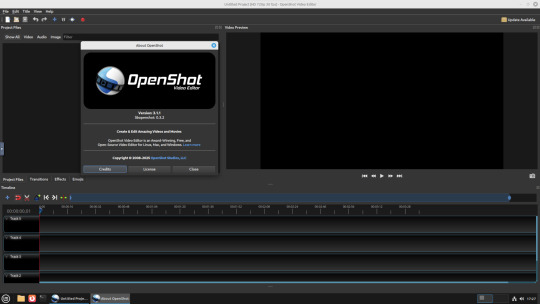
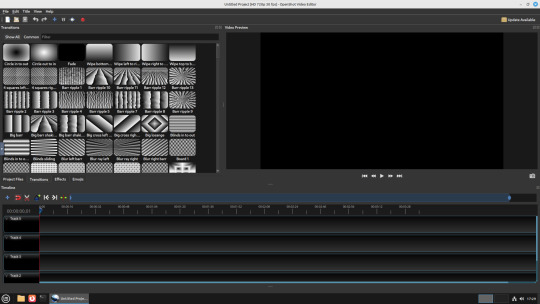
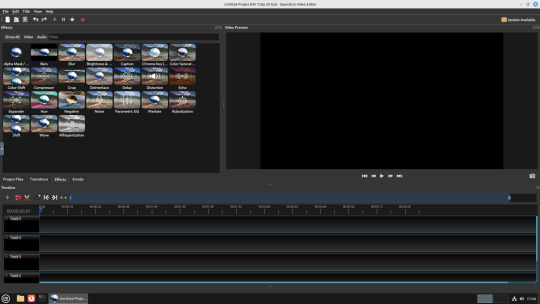
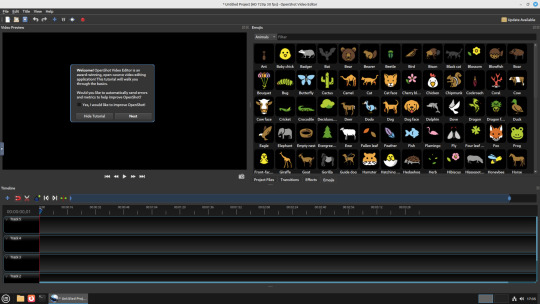
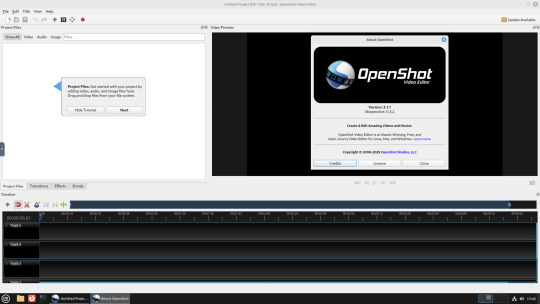

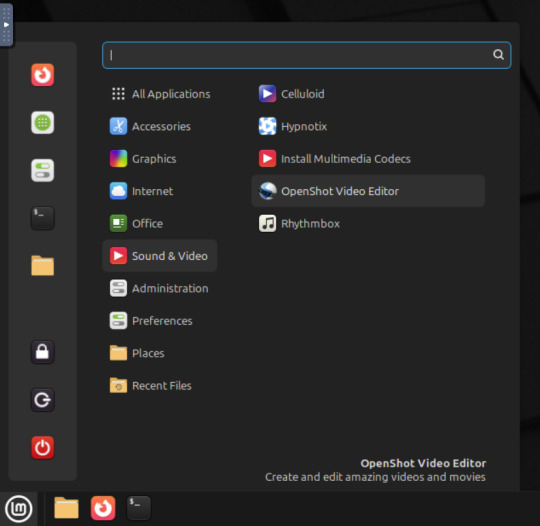
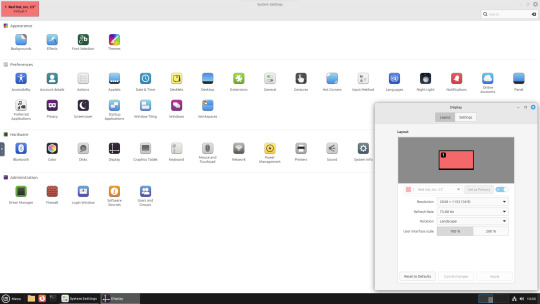
22.02.25
A quick look at the free, open source Openshot Video Editor, running in Linux Mint Cinnamon 22.1 on Distrosea!
On Mint, Openshot is installed via the Software Manager as a .deb file.
Here are some of the packages (dependencies) that are installed alongside it. The version featured in the manager (Openshot 3.1.1) is a few versions behind the web version (3.3.0) for stability reasons.
OpenShot was released in August 2008. It is built using Python, C++ (libopenshot) and the Qt5 framework. It is available for Linux, Chrome OS, Windows and Mac OS operating systems.
https://www.openshot.org/
It can handle most modern and classic video formats and can export videos in up to 8K resolution. It comes with a customisable interface, built-in tutorial, various transitions, effects, 3D text and animation effects with Blender Animation support and emoji emblems that can be used in video shots through the time line.
Openshot comes with a default dark theme and a light theme.
https://en.wikipedia.org/wiki/OpenShot
An interesting look at the OpenShot User interface. The window size of the VM is shown in the 'Display Settings' window. The actual display resolution is 2560x1440.
Online video tutorials can be watched here:
https://www.youtube.com/playlist?list=PLymupH2aoNQNezYzv2lhSwvoyZgLp1Q0T
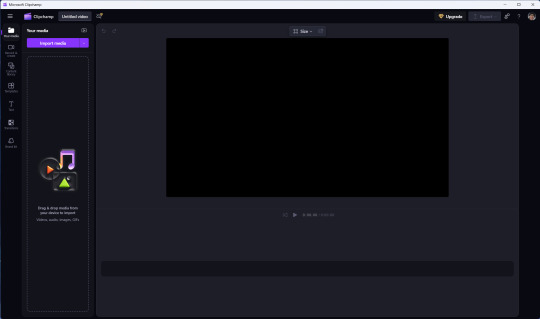
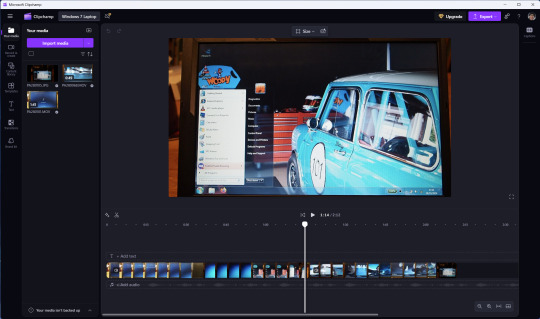
However I still prefer the simplicity of Clipchamp, as it includes ready made templates, a clean UI and is a browser based web-app that can run on any operating system.
https://clipchamp.com/en/
Other popular open-source video editing applications include:
Kdenlive (released 2002)
https://kdenlive.org/en/
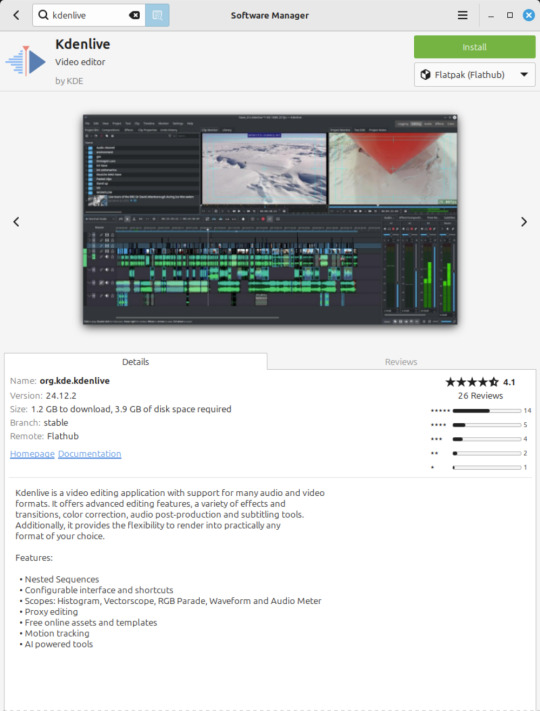
Shortcut (released 2011)
https://www.shotcut.org/
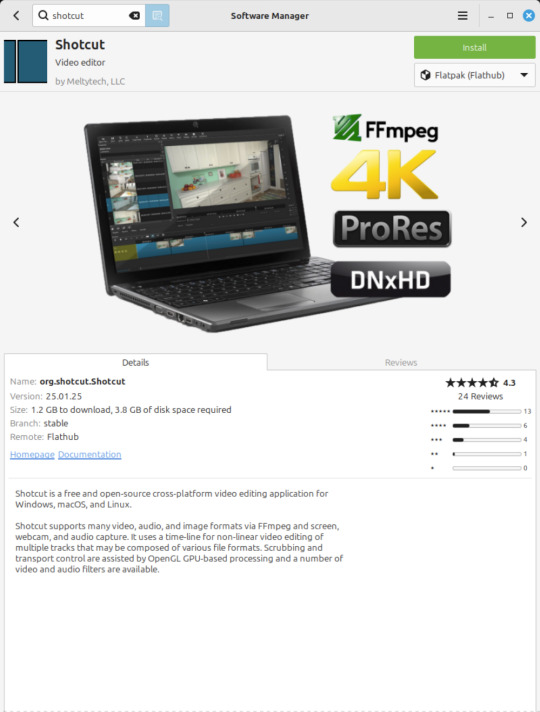
Flowblade Movie Editor (released 2009)
https://jliljebl.github.io/flowblade/
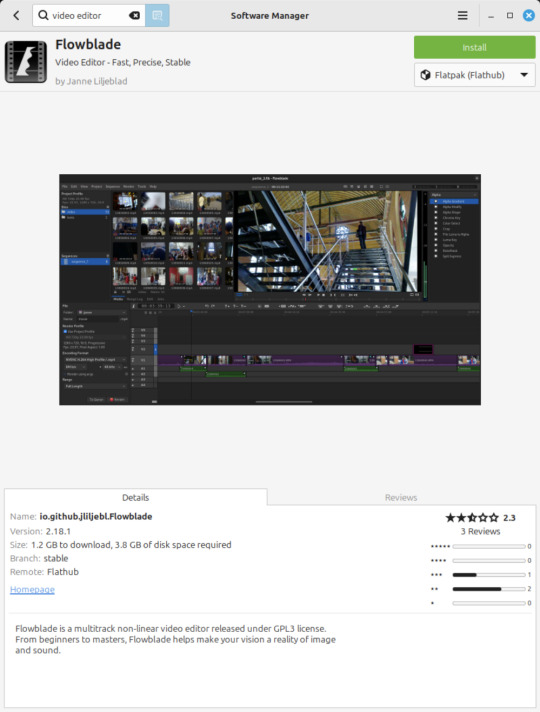
Blender Animation Program (released 1994)
https://www.blender.org/
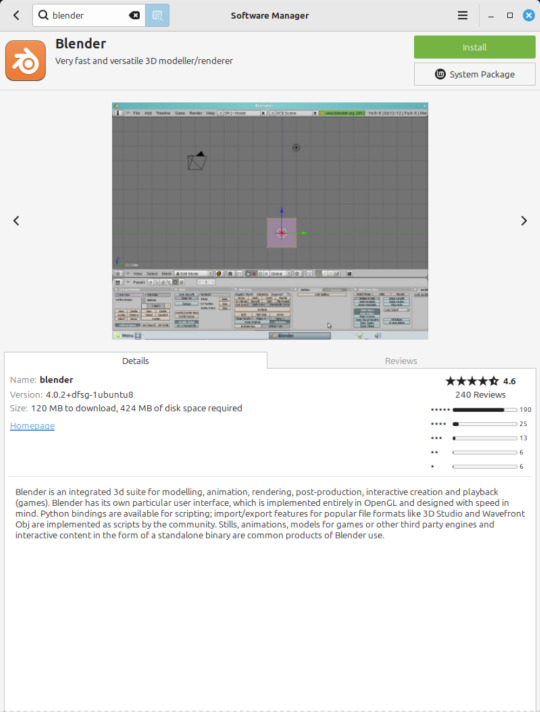
All of the video editors mentioned here have their pros and cons and many can be installed as a .deb (System Package) or .flatpak (Containerized App) on Linux Mint.
5 notes
·
View notes
Text
Mastering Design: A Comprehensive Guide to Free Graphic Design Resources
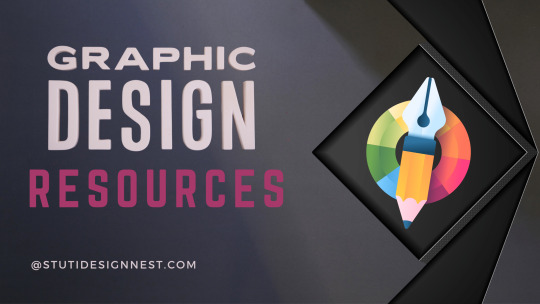
Graphic design is a dynamic field that requires a keen eye for aesthetics, a mastery of various tools and techniques, and access to the right graphic design resources.
Whether you're a seasoned designer looking to expand your toolkit or a novice seeking to enhance your skills, having access to free graphic design resources can be invaluable.
In this comprehensive guide, we'll explore the top free resources available to designers, from high-quality images and fonts to versatile design software and tutorials.
By harnessing the power of these resources, you can elevate your designs, streamline your workflow, and unlock your full creative potential.
1. Unsplash:
Unsplash is a goldmine for high-resolution, royalty-free images that can breathe life into your designs. With a diverse collection spanning countless categories, from nature and architecture to technology and fashion, Unsplash offers designers an endless source of inspiration without any licensing fees.
2. Google Fonts:
Typography is a cornerstone of effective design, and Google Fonts provides a vast selection of free, open-source typefaces to choose from. Whether you're looking for classic serifs, modern sans-serifs, or decorative display fonts, Google Fonts offers something for every project, all accessible with a simple integration into your design software or website.
3. Canva:
Canva has democratized graphic design with its intuitive platform and extensive library of templates, graphics, and tools. While Canva offers premium features with a subscription, its free version still packs a punch, allowing users to create professional-looking designs for a variety of purposes, from social media graphics to business presentations.
4. Pexels:
Like Unsplash, Pexels offers a vast collection of high-quality stock photos and videos, all available for free download and use. Whether you need striking visuals for a website, blog post, or marketing campaign, Pexels provides designers with a treasure trove of visually stunning assets to enhance their projects.
5. Adobe Spark:
Adobe Spark offers a suite of design tools for creating graphics, web pages, and video stories, all accessible for free with a basic account. With its easy-to-use interface and customizable templates, Adobe Spark empowers designers to create eye-catching visuals and multimedia content without the need for advanced technical skills or expensive software.
6. Font Squirrel:
Font Squirrel is a valuable resource for designers seeking high-quality, commercially licensed fonts that won't break the bank. With its curated collection of free fonts, Font Squirrel offers designers a diverse range of typefaces to choose from, ensuring that every project has the perfect typography to make it stand out.
7. Pixabay:
Pixabay is a one-stop shop for free stock photos, illustrations, vectors, and videos, contributed by a global community of creators. With its extensive library and easy-to-use search functionality, Pixabay provides designers with a wealth of visual resources to enhance their projects, all available for free download and use.
8. Freepik:
Freepik offers a vast selection of free graphic resources, including vector graphics, illustrations, icons, and PSD files. Whether you're designing a website, brochure, or social media post, Freepik provides designers with a wealth of creative assets to choose from, all available for free with proper attribution.
9. Gravit Designer:
Gravit Designer is a powerful vector design tool that offers a free version with essential features for creating stunning graphics. With its intuitive interface and robust set of tools, Gravit Designer empowers designers to bring their creative visions to life with precision and ease, all without the need for expensive software.
10. Inkscape:
Inkscape is a free and open-source vector graphics editor that rivals premium software with its extensive features and flexibility. Whether you're a professional designer or a hobbyist, Inkscape provides a versatile platform for creating everything from logos and illustrations to diagrams and mockups, all without spending a dime.
In conclusion, mastering graphic design requires not only talent and skill but also access to the right resources. By leveraging the top free graphic design resources outlined in this guide, you can elevate your designs, streamline your workflow, and unlock your full creative potential without breaking the bank.
Whether you're in need of high-quality images, fonts, templates, or design software, the internet offers a wealth of free resources waiting to be explored.
So why wait? Start harnessing the power of these free graphic design resources today and take your designs to new heights!
#design#graphic design#design tools#designinspiration#design software#design resources#design reference
8 notes
·
View notes
Text
👉 VidVoicer Review ✅ Features, Pricing, Bonuses and OTOs 🚀
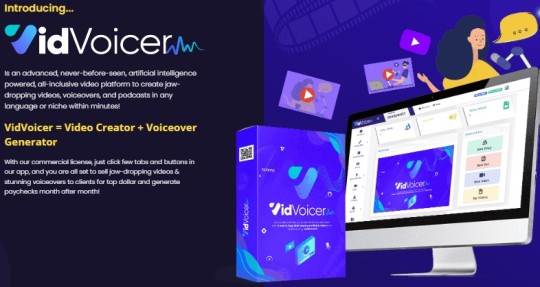
VidVoicer Overview 🌟
VidVoicer is an AI-powered tool designed to create videos and voiceovers quickly and efficiently. Its standout features include high-quality HD video rendering, text-to-speech voiceovers in 150+ voices and 50+ languages, and a built-in video editor. The software is beginner-friendly, allowing users to create whiteboard, explainer, and social media videos without prior experience. It is entirely cloud-based, so it can be accessed on various devices without installation.
👉 Click Here for Get Instant Access VidVoicer 🖰 >>
Key Features 🔑
Voiceovers & Languages: Generate human-like voiceovers in multiple languages and genders with pitch, tone, and speed controls.
Video Creation: Transform text into videos, use images from keywords or URLs, and integrate voiceovers seamlessly.
Video Editing: Add logos, watermarks, background music, and customize videos easily.
HD Quality: All videos are rendered in high definition.
Commercial License: Sell videos and voiceovers to clients for unlimited revenue potential.
👉 Click Here for Get Instant Access VidVoicer 🖰 >>
Pricing & Upgrades 💰
Front-End (FE): $37Includes commercial rights, basic video and voiceover creation tools, and a 1GB monthly storage limit.
OTO 1 - Pro Edition: $67Adds unlimited videos/voiceovers, extended character limits, custom music, 2GB storage, and access to stock videos.
OTO 2 - Content Writer: $37AI-powered copywriting tools for creating sales copies, email templates, articles, and more.
OTO 3 - Agency Rights: $97Enables starting a video/voiceover agency with marketing resources.
Discount codes are often available, such as a 50% off coupon during promotions.
👉 Click Here for Get Instant Access VidVoicer 🖰 >>
Bonuses 🎁
VidVoicer often comes with exclusive bonuses, including additional templates, tutorials, and stock resources, depending on the purchase plan.
Strengths & Monetization 🌍💼
Ideal for freelancers, agencies, or content creators aiming to provide services like explainer videos, voiceovers, and podcasts.
The commercial license enables users to generate income by selling creations directly or offering services on platforms like Fiverr and Upwork.
👉 Click Here for Get Instant Access VidVoicer 🖰 >>
FAQs
👉 What Exactly Is VidVoicer?
VidVoicer is a web-based platform for creating voiceovers and videos. Since it does both, it's the only tool you'll need. Simply log in, enter any text (such as a video script), choose a voice and language, and click the button to instantly create a voiceover or video. You can then edit or download those files immediately.
👉 How Many Voiceovers Can I Create?
You can create unlimited number of voiceovers Longer up to 1000 characters per voiceover with the personal license, and up to 3000 characters per voiceover with commercial license.
👉 How many videos can I create?
You can create as many videos as you need. Each video will be stored in the cloud storage on our platform, and you can also download the MP4 file. Your membership includes 1GB of storage, so if you use all of that, you can simply download some videos and delete them from the cloud to free up some space.
👉 How To Get Started?
Just click the order button and go through the checkout process. Your membership account will instantly be set up and activated. When you log in, you'll find tutorial videos, and you can begin using the tools immediately.
👉 Is there a commercial license included?
There is an option to buy commercial license. Buyers can opt for personal access as well as commercial license. Commercial rights will enable you to sell these services and make money.
👉 Click Here for Get Instant Access VidVoicer 🖰 >>
👉 Is There Any Training Included?
Yes, We Have Created A Video Tutorial To Guide You How To Use The Software Just To Make Sure You Make No Errors And Do It Easily, Hassle Free.
👉 Is It Still Worth it if I Have Only Few Voiceovers To Be Generated?
Sure. Would you prefer to spend $100 or more to have one voiceover created? With VidVoicer, you can create voiceovers on demand, over and over. You can create the voiceovers you need now, and any that you may need in the future, all for the small one-time fee to join today. With VidVoicer you don't have to search for freelancers or deal with contracts. To us that sounds like it's worth it even for a few voiceovers!
👉 Will This Work On Mac And PC?
Yes, It Doesn’t Matter What Operating System Of Device You’re Using. It Is Easy To Use And Works Perfectly, Every Time.
👉 Click Here for Get Instant Access VidVoicer 🖰 >>
👉 Do You Provide Support And Updates?
Yes! VidVoicer Is Super Easy To Use, But If There’s Ever An Issue, We’re Right Here. Send Us An Email And We’ll Fix You Up! We’ll Also Let You Know When New Updates Are Available, And Offer Them To You For Free, As A Valued Customer!
👉 Is There A Money Back Policy?
Yes, You Get 30 Days To Use VidVoicer And Make Sure This Is For You. If For ANY Reason You’re Not Satisfied, Just Let Us Know, And We’ll Get You A Refund Of Your Tiny Investment Here Today.
👉 Is It Newbie-Friendly?
Yes. You Don’t Need Any Special Skills Or Technical Experience To Generate Human Like Voiceovers.
👉 Is It Compatible With All Video Editing Softwares?
Yes It Is. VidVoicer Is Compatible With All Video Apps.
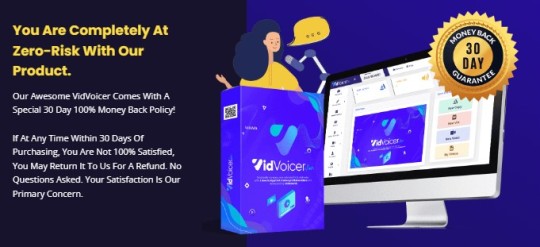
👉 Click Here for Get Instant Access VidVoicer 🖰 >>
#vidvoicer review#vidvoicer#vidvoicer demo#vidvoicer reviews#vidvoicer software review#vidvoicer bonus#vidvoicer bonuses#get vidvoicer#buy vidvoicer#vidvoicer review & bonus#vidvoicer otos#vidvoicer review bonus#vidvoicer review and demo#review vidvoicer#vidvoicer demo review#vidvoicer review 2022#vidvoicer preview#vidvoicer review bonuses#vidvoicer review and bonus#vidvoicer software#what is vidvoicer#vidvoice review#vidvoicer discount#marketing#affiliatemarketing#onlinemarketing#review#reviews#software#preview
3 notes
·
View notes
Text


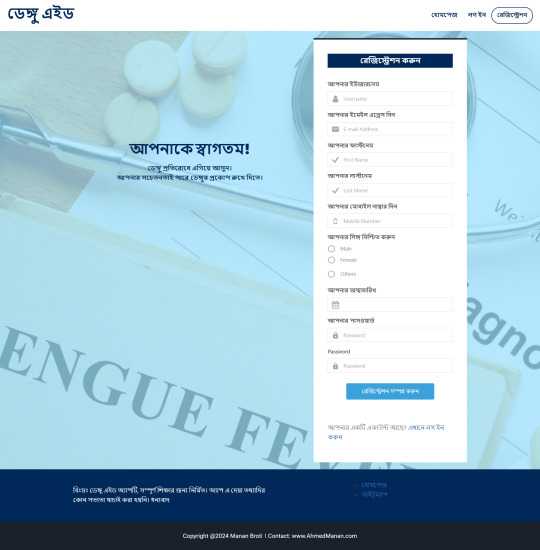
I'm a web developer & CMS expert like Wix, Editor X, Velo, SquareSpace, WordPress, WebFlow, Unbounce, Click Funnels, Shopify. Also handy with Software Quality Assurance, Software Manual Testing, Software Automation Testing.
I can develop any kind of Websites, like:
✔️ Agency/ Business Website ✔️ Online Store / eCommerce Website ✔️ Dropshipping Website ✔️ Personal/Portfolio Website ✔️ Sales Funnel/Landing Page ✔️ News/Blog/ Magazine Website ✔️ Government Website ✔️ Real Estate/Realtors ✔️ Art Gallery / Photographer Website ✔️ Crypto/ NFT Website ✔️ School/College/University(Education Website) ✔️ Doctors/ Appointment Website ✔️ Gaming/ Product / Landing
If you are interested in my services, feel free to contact me. I will be glad to help you and will show you my previous work.
#WordPress#wordpress design#wordpress development#wix#squarespace#web design#landing page#landing page design#freelance#freelancer#Freelancer Manan Broti#Manan Broti#web designer
6 notes
·
View notes
Text
I got a brand new brand refurbished laptop, I couldn't avoid it coming with a fresh install of windows 10 (I could have paid extra for 11) and I thought hey why not, technically I paid for it, I'll just leave windows on it, it's a big harddrive, you never know when you might need windows, let me just resize the partition.... oh the minimum size is 55gb? fair enough, how much free space does that leave me?
none. No free space. a fresh copy of windows with no files, is, aparently, fifty goddamn five fucking gigabytes. 55 gb. fifty five! My first computer's 2 harddrives didn't even add up to 55 so this is kinda a culture shock.
But Windows has almost nothing built in as standard. This isn't like a fatass Linux Distro where it comes with a full IDE and 2 pieces of image manipulation software and 150 games and a full office suite and a DBMS and 3 different browsers and a web server and every known scripting language, drivers for 8 different types of disk partition and a DAW and a video editor and 3 different WMs and stil only takes up 25gb. This is INSANE. It must just be 5gb of OS and 50gb of spyware.
Bye bye Windows!
2 notes
·
View notes
Text
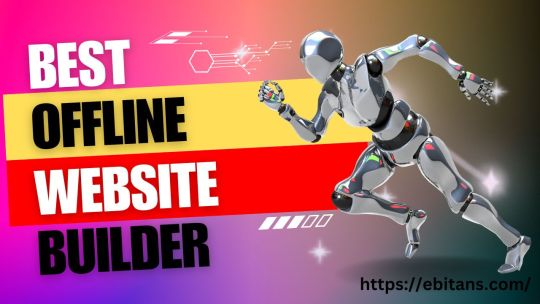
Best Offline Website Builder Software: Building Websites without Internet
In today's world, having an online presence is vital for businesses and individuals alike. Whether you’re a small business owner, a freelancer, or someone looking to showcase your portfolio, having a website is no longer a luxury—it's a necessity. While plenty of online website builders are available, such as Wix, Squarespace, and WordPress, not everyone has access to a stable internet connection. This is where offline website builders come in handy.
Offline website builder software allows you to create, edit, and design websites without being connected to the internet. Once your design is complete, you can publish it online when you’re ready. These tools are excellent for those who prefer to work on their websites offline, whether due to limited internet access or personal preference. In this article, we'll explore some of the best offline website builder software available, and their features, pros, and cons.
Why Choose Offline Website Builders?
Before diving into the best offline website builders, let’s first discuss why you might want to use an offline builder over an online one. There are several reasons why someone might prefer to work offline:
No Need for Constant Internet Access: With offline website builders, you can create your website at your own pace, even if you don’t have a stable internet connection.
Increased Control and Flexibility: Many offline builders allow you to work directly with HTML, CSS, and JavaScript. This provides more control over the design and functionality of your website.
Faster Load Times: Since everything is stored locally, there’s no need to wait for images, templates, or other assets to load over the internet. This can significantly speed up your design process.
Backup and Security: All your website files are stored on your local machine, which means you don’t have to worry about server outages or security breaches affecting your website.
Best Offline Website Builder Software
Now that we understand the benefits of offline builders, let’s dive into some of the best offline website builder software available today.
1. Adobe Dreamweaver
One of the most well-known and robust tools for building websites is Adobe Dreamweaver. A part of the Adobe Creative Cloud suite, Dreamweaver is a powerful tool that allows users to design, code, and manage websites. It is widely used by both beginners and advanced users alike.
Key Features:
Code and Design View: Dreamweaver offers both a visual editor and a text-based code editor. You can toggle between the two as you design your site.
Live Preview: You can view a live preview of your site as you make changes, allowing you to see exactly how it will look once published.
Responsive Design: Dreamweaver makes it easy to create responsive websites that look great on all devices.
Supports Multiple Languages: You can use Dreamweaver to code in HTML, CSS, JavaScript, and more.
Pros:
Highly customizable for developers.
Supports a wide range of web technologies.
Excellent support for responsive design.
Cons:
Steep learning curve for beginners.
Requires a subscription to Adobe Creative Cloud.
Best For: Professional developers and those familiar with HTML and CSS.
2. Mobirise
Mobirise is a free offline website builder software that allows users to create mobile-friendly websites with ease. It’s a great tool for those who don’t have extensive coding knowledge but still want to create a professional-looking site.
Key Features:
Drag-and-Drop Builder: Mobirise uses a drag-and-drop interface, making it easy for beginners to use.
Pre-made Templates and Blocks: The software comes with a variety of templates and content blocks, which you can customize to your liking.
Mobile-Friendly: Websites built with Mobirise are automatically responsive and optimized for mobile devices.
Works Offline: You can work on your website completely offline and then publish it when you're ready.
Pros:
Easy to use for beginners.
Free to use, with optional paid themes and extensions.
Supports Google AMP and Bootstrap 4.
Cons:
Limited customization compared to more advanced builders.
Requires third-party hosting for publishing.
Best For: Beginners and small business owners who need a simple and quick solution.
3. Pinegrow
Pinegrow is a desktop website builder that allows users to create responsive websites using a visual editor. What sets Pinegrow apart is its focus on providing professional web designers and developers with powerful tools while still being accessible to beginners.
Key Features:
Drag-and-Drop Interface: Pinegrow allows users to drag and drop elements onto the page, making it easy to build layouts without coding.
Real-time Multi-page Editing: With Pinegrow, you can edit multiple pages of your site at once, and changes are reflected in real time.
Framework Support: Pinegrow supports popular frameworks such as Bootstrap, Tailwind CSS, and Foundation.
Responsive Design: The builder makes it easy to create responsive websites that look good on all devices.
Pros:
Supports frameworks like Bootstrap and Tailwind.
Suitable for both beginners and advanced users.
Provides a good balance between code-based and visual editing.
Cons:
Some users might find the interface cluttered.
Not as beginner-friendly as other builders.
Best For: Web designers and developers who want more control over their designs without sacrificing ease of use.
4. WYSIWYG Web Builder
WYSIWYG Web Builder is another offline website builder that’s popular among beginners. The acronym stands for "What You See Is What You Get," meaning the design view shows you exactly what your final website will look like.
Key Features:
Visual Editor: You don’t need to know any coding to create a website with WYSIWYG Web Builder. Simply drag and drop elements onto the page.
Pre-made Templates: Choose from a variety of templates and customize them to suit your needs.
Responsive Web Design: Create websites that are optimized for mobile devices.
Extensions: WYSIWYG Web Builder supports a wide range of extensions that can add functionality to your site, such as image galleries, sliders, and contact forms.
Pros:
Easy for beginners to use.
No coding required.
Offers a wide range of pre-made templates.
Cons:
Limited customization options for advanced users.
Some features are outdated compared to more modern builders.
Best For: Beginners who want a simple, no-coding-required website builder.
5. Webflow (with Offline Features)
Although Webflow is primarily an online website builder, it offers a unique option to work offline through its desktop application. Webflow is ideal for designers who want to create sophisticated websites without diving too deeply into code. It combines the ease of a visual editor with the power of custom coding.
Key Features:
Responsive Design: Webflow lets you create fully responsive websites that look great on all devices.
CMS Integration: Webflow has a built-in CMS, making it easy to manage dynamic content like blogs or product catalogs.
Custom Code: For users who want more control, Webflow allows the addition of custom HTML, CSS, and JavaScript.
Offline Capabilities: The Webflow desktop app allows users to work on their designs without being connected to the internet, and then sync changes once they’re back online.
Pros:
Combines visual design with the power of code.
Great for designers and developers who want flexibility.
Offline capabilities through the desktop app.
Cons:
Steeper learning curve compared to drag-and-drop builders.
Premium features require a subscription.
Best For: Designers and developers who need advanced features and offline editing capabilities.
Conclusion
Choosing the best offline website builder software largely depends on your level of expertise, specific needs, and the type of website you want to create. If you're a beginner looking for a straightforward solution, tools like Mobirise or WYSIWYG Web Builder are excellent choices. For more advanced users or those who prefer to have greater control over their design and code, Adobe Dreamweaver, Pinegrow, and Webflow offer the features and flexibility you need.
if you need more information then see more>>>
2 notes
·
View notes
Text
TIME Magazine Snubs Elon Musk in 2024 ‘100 Most Influential in AI’ List, Includes Scarlett Johansson

(L) Tesla CEO Elon Musk leaves the Phillip Burton Federal Building on January 24, 2023 in San Francisco, California. / (C) A protester steps on a picture of Time Magazine in 2017. / (R) Scarlett Johansson attends the “Fly Me To The Moon” photocall on July 11, 2024 in Madrid, Spain.
TIME Magazine placed actress Scarlett Johansson in the running, but left out tech mogul and AI program creator Elon Musk off of its yearly list of the “100 Most Influential People in AI.”
For its 2024 cover, the magazine combined images of eighteen AI leaders, led by Jensen Huang, the CEO of Nvidia, with a large image of the “Black Widow” hero.
Released on Thursday, the second annual TIME100 AI edition featured prominent CEOs in the rapidly expanding area, such as Dario Amodei of Anthropic and Sam Altman of OpenAI, in addition to founders and influencers.
— DogeDesigner (@cb_doge) September 5, 2024
Musk was noticeably missing from its list. Musk introduced xAI last summer, and his AI chatbot Grok has gained popularity over competitors like ChatGPT.
Salesforce CEO Marc Benioff, whose software company has made huge investments in AI startup Anthropic and created a $500 million AI fund to support new startups, is the owner of the old magazine.
“Disclosures are included throughout the TIME100 AI list for any companies mentioned that are backed by Salesforce Ventures, the corporate venture capital arm of Salesforce, where TIME’s owner and co-chair, is CEO,” a Time spokesperson told reporters.
Social media backlash followed TIME’s perplexing decision to pass over the founder of SpaceX, Tesla, and xAI .
“Every person on this top 100 list, if asked, would say Elon should be on this list,” one user said on X.
The billionaire established Neuralink in 2016, and the company gained notoriety at the beginning of this year when it successfully implanted a brain chip in a paralyzed patient, enabling him to use his thoughts to surf the web and play video games.
Musk also launched Colossus, the most powerful Nvidia GPU supercomputer in the world, online this past week.
“I thought it was cute that Elon Musk wasn’t on the cover of TIME’s 100 most influential people in AI,” another user posted on X. “I had to check for myself when I heard he didn’t make the list at all. My f*cking car drives itself lol.”
Additionally, culture and media critics questioned the inclusion of YouTuber Marques Brownlee and Hollywood actor Anil Kapoor on the list of celebrities which also included actress Scarlett Johansson, who had a falling out with OpenAI over the owner’s alleged use of her voice to train a chatbot without her consent.
Rivals of Musk, such as Mark Zuckerberg of Meta, Sundar Pichai of Google, and Satya Nadella of Microsoft, were also included on the list.
“If the world of AI was dominated by the emergence of startup labs like OpenAI, Anthropic, and their competitors in 2023, this year, as critics and champions alike have noted, we’ve seen the outsize influence of a small number of tech giants,” said Editor in Chief Sam Jacobs. “This year’s list offers examples of the possibilities for AI when it moves out of the lab and into the world.”
According to a news release, the list was compiled by TIME’s editors and reporters, who solicited suggestions from numerous “industry executives.”
Stay informed! Receive breaking news blasts directly to your inbox for free. Subscribe here. https://www.oann.com/alerts
2 notes
·
View notes